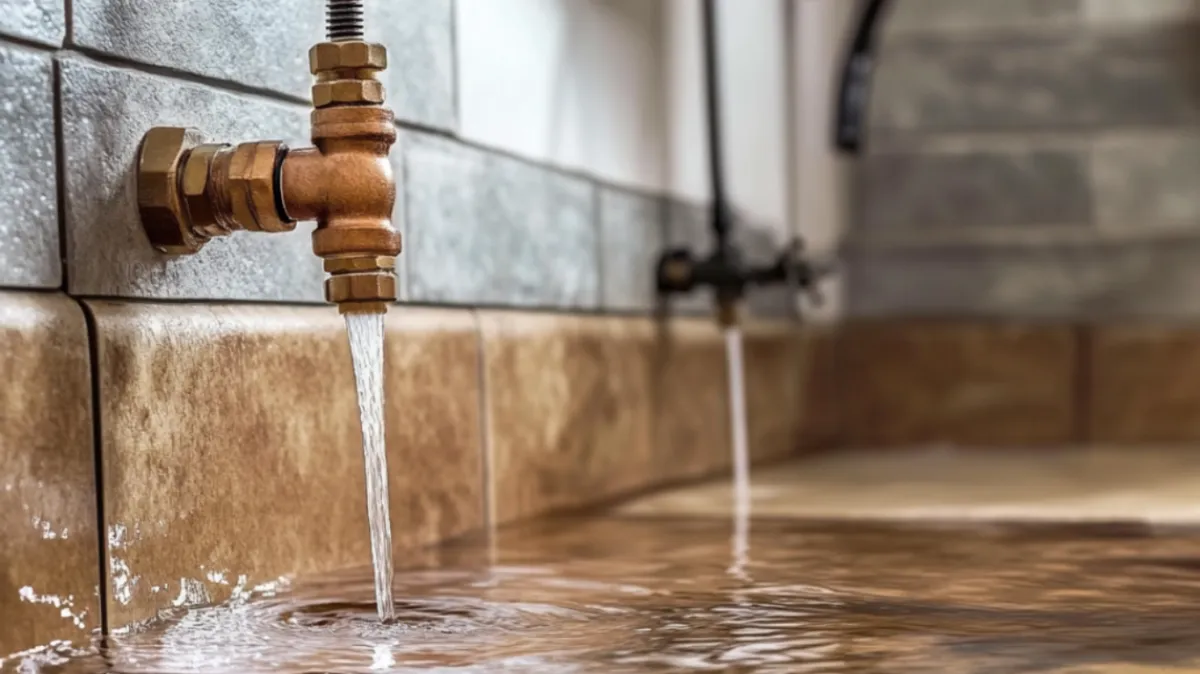
Rosedale Plumbing Journal
By The Plumbing Doc

April Showers: Preparing Your Plumbing for Spring
Inspect for Seasonal Plumbing Wear and Leaks
Even in areas like ours that don’t experience freezing temperatures or snow, your plumbing system can still suffer from seasonal stress. Shifting soil, gradual wear and tear, and daily use can take a toll on pipes, fixtures, and connections. Spring is the perfect time to check in on your plumbing before warmer months increase your water usage with gardening, irrigation, and outdoor activities.
Why It Matters:
Minor plumbing issues often go unnoticed until they become costly problems. A small leak or drop in water pressure can signal early signs of damage—and ignoring them could lead to water waste, structural damage, or even mold growth behind walls and under floors.
Common Signs of Spring Plumbing Issues:
✔ Low Water Pressure: If your faucets or showers aren’t flowing like they used to, sediment buildup or minor leaks may be to blame. This could stem from mineral deposits in the pipes or pinhole leaks that gradually reduce flow.
✔ Unexplained Water Spots: Check under sinks, around toilets, behind appliances, and along outdoor lines for damp spots, puddles, or discolored walls and baseboards. These are often signs of slow leaks or worn-out seals.
✔ Leaky Fixtures: Even a slow drip from a faucet or a running toilet can waste hundreds of gallons of water each month—impacting both your water bill and the environment.
✔ Higher Water Bills: If you’ve noticed a jump in your utility bill without an increase in water usage, you may have a hidden leak behind the walls, in slab piping, or under your yard.
What You Can Do:
Conduct a visual inspection of exposed pipes and fixtures around your home—look for rust, corrosion, moisture, or mineral deposits.
Listen for running water sounds when no taps are open.
Use your water meter to detect hidden leaks: turn off all water sources and check if the meter continues to run.
Watch for signs of mildew or musty odors, which could indicate moisture buildup behind walls.
Maintain Yard and Area Drains
In regions like ours where rainfall is minimal, you might not think about drainage until it becomes a problem. While gutters and downspouts may not be necessary for every home in our area, yard and area drains play a crucial role in keeping your property dry during the occasional rainstorm or from overwatering landscaping. These systems are designed to prevent pooling water and direct it away from walkways, patios, and your home's foundation.
But when these drains become clogged with mud, leaves, silt, and debris, they can no longer do their job effectively—leading to soggy spots in your yard, slow runoff, or even erosion over time.
Why Proper Drainage Matters:
Protects Landscaping: Standing water can drown plants, cause soil erosion, or attract pests like mosquitoes.
Prevents Property Damage: Poor drainage can undermine patios, damage concrete, or seep into crawl spaces and foundations.
Reduces Slip Hazards: Water that lingers on sidewalks and driveways can become slippery and unsafe, especially in shaded areas.
How to Keep Yard and Area Drains Flowing:
✔ Check for Blockages Regularly: Inspect grates and openings for built-up mud, leaves, gravel, or trash. These materials often collect at surface inlets and can quickly obstruct water flow.
✔ Flush the System with Water: Use a garden hose to send water through your drain lines. This helps verify that water flows freely and can also dislodge minor sediment buildup inside the pipes.
✔ Watch for Pooling Water: After watering your lawn or a light rainfall, take note of any low-lying areas where water lingers. This could signal a clog or improper grading.
✔ Keep Drain Grates Visible: Make sure grass, mulch, or decorative ground cover isn’t blocking access to surface drains. The top of each drain should be visible and unobstructed.
Inspect Outdoor Plumbing Fixtures
Although we don’t experience freezing winters here, that doesn’t mean your outdoor plumbing should be ignored when spring rolls around. In fact, year-round use of outdoor faucets, irrigation systems, and hose bibs means these fixtures can develop slow leaks or efficiency issues that go unnoticed during the cooler months. Now is the perfect time to walk your property and ensure everything is in good working condition before the warm season really kicks in.
Even a minor outdoor leak can lead to significant water waste over time—especially in a dry climate where conservation matters. Leaks may also contribute to unexpected spikes in your water bill or cause erosion and damage to your landscaping.
What to Look For:
✔ Test Hose Bibs: Turn on all outdoor faucets and check for signs of drips, low water pressure, or leaks around the handle or spout. A worn washer or loose connection may be the culprit.
✔ Inspect Irrigation Systems: Run your sprinkler system zone by zone and watch for uneven spray, broken heads, or water bubbling up from the ground. These issues may point to cracked pipes or faulty valves below the surface.
✔ Look for Soil Erosion or Water Pooling: Any area with unusually damp soil or depressions forming around outdoor plumbing could indicate a slow underground leak that’s washing away soil over time.
✔ Check for Rust or Corrosion: Hose bibs and outdoor valves are constantly exposed to the elements. Look for signs of corrosion, mineral deposits, or worn-out threads that may affect the seal.
Why It Matters:
Leaking irrigation systems can waste hundreds of gallons of water per month.
Faulty sprinkler heads may damage plants, leave dry spots, or overwater certain areas.
Water pooling near your home’s foundation could create long-term structural issues.
Early detection of outdoor leaks helps prevent expensive repairs and water waste.
Prevent Drain Clogs & Slow Water Flow
Even in a dry climate, indoor plumbing sees heavy usage, leading to gradual buildup in pipes. Over time, grease, hair, and soap scum can restrict water flow and cause slow drains.
Best Practices for Drain Maintenance:
✔ Flush with Hot Water & Vinegar: Helps break down grease and debris naturally.
✔ Use Drain Strainers: Prevents hair, food particles, and debris from clogging your pipes.
✔ Avoid Chemical Drain Cleaners: Harsh chemicals can damage pipes—opt for professional hydro jetting instead.
Pro Tip: If your sinks or tubs drain slowly, a camera inspection can identify hidden buildup before it leads to major clogs.
Ensure Your Water Heater is Running Efficiently
With summer approaching, your water heater should be operating at peak efficiency to handle increased usage without wasting energy.
Water Heater Maintenance Checklist:
✔ Flush the Tank: Removes sediment buildup that reduces efficiency.
✔ Inspect for Rust or Leaks: Small leaks can lead to major failures if left unchecked.
✔ Adjust the Temperature: Set to 120°F for optimal energy savings and safety.
Pro Tip: If your water heater is over 10 years old or struggling to provide consistent hot water, The Plumbing Doc offers expert repairs and replacements.
Schedule a Professional Plumbing Inspection
Spring is the perfect time to have your plumbing system checked for efficiency, ensuring everything runs smoothly before summer.
✔ Advanced Leak Detection – Identifies small leaks before they cause damage.
✔ Camera Drain Inspections – Detects blockages, root intrusion, or pipe misalignment.
✔ Water Pressure Testing – Ensures strong and consistent flow throughout your home.
📞 Schedule your spring plumbing check-up with The Plumbing Doc today!
👉 [https://theplumbingdoctorbakersfield.com/]

Schedule a Professional Inspection
Ready to schedule a professional inspection? Contact us today.

